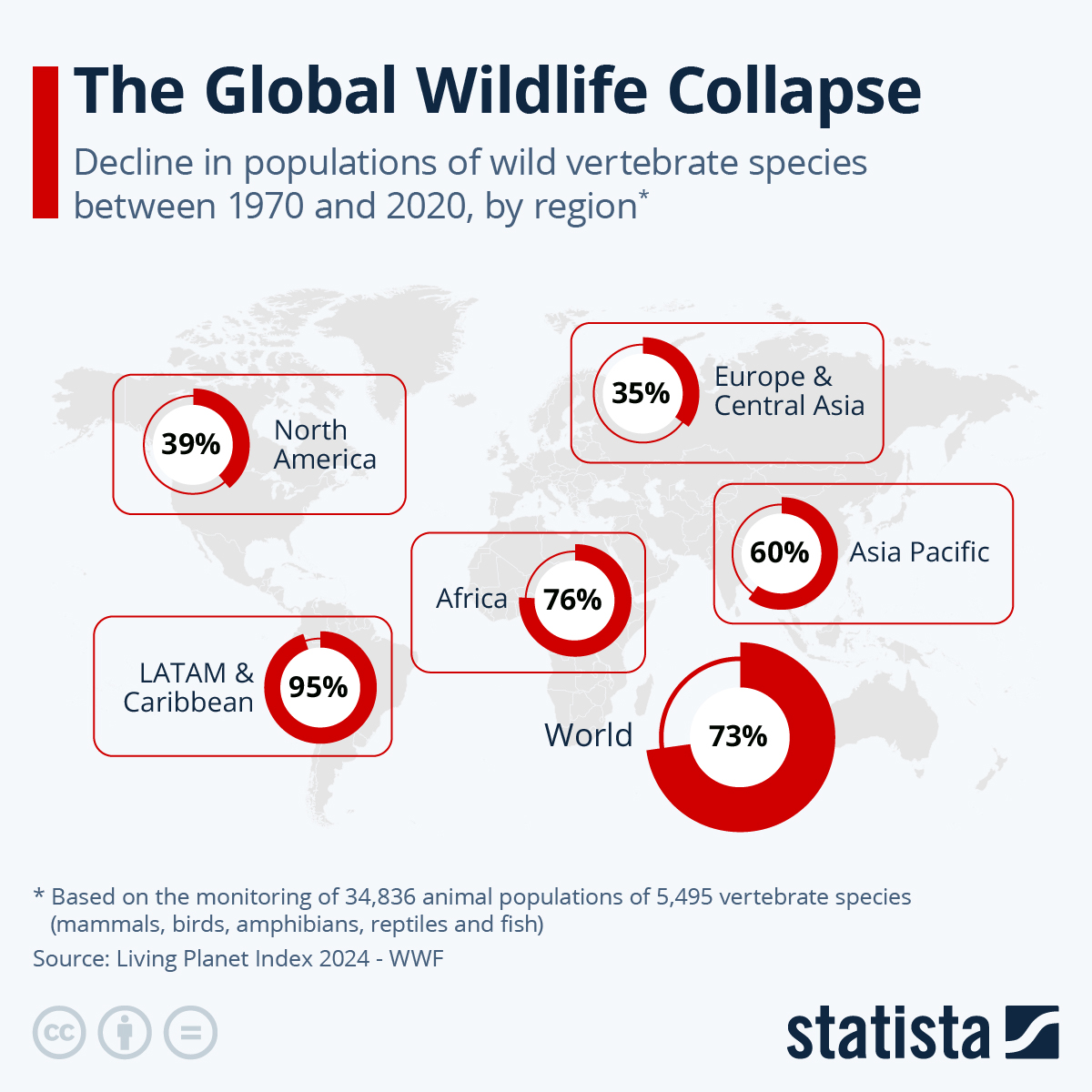The World Wide Fund for Nature (WWF) has released a new alarming report revealing that global wildlife populations have declined dramatically over the past half century. The Living Planet Index, which tracks more than 30,000 animal populations of over 5,000 species around the globe, reveals that there has been a 73 percent decline in the world's wildlife between 1970 and 2020. Human activities are singled out as the main drivers, with habitat destruction through deforestation and agricultural expansion.
As the following infographic shows, the worst impact on biodiversity has been in Latin America and the Caribbean, where wildlife populations have declined by 95 percent since 1970. Over the same period, vertebrate populations have declined by 76 percent in Africa and 60 percent in the Asia and Pacific region. In North America and Europe and Central Asia, the declines are 39 percent and 35 percent, respectively. The impact of human activities is not limited to land only though. While research has shown that since 1970, global populations of land animals have declined by nearly 70 percent, freshwater fish populations have declined by more than 80 percent.





















